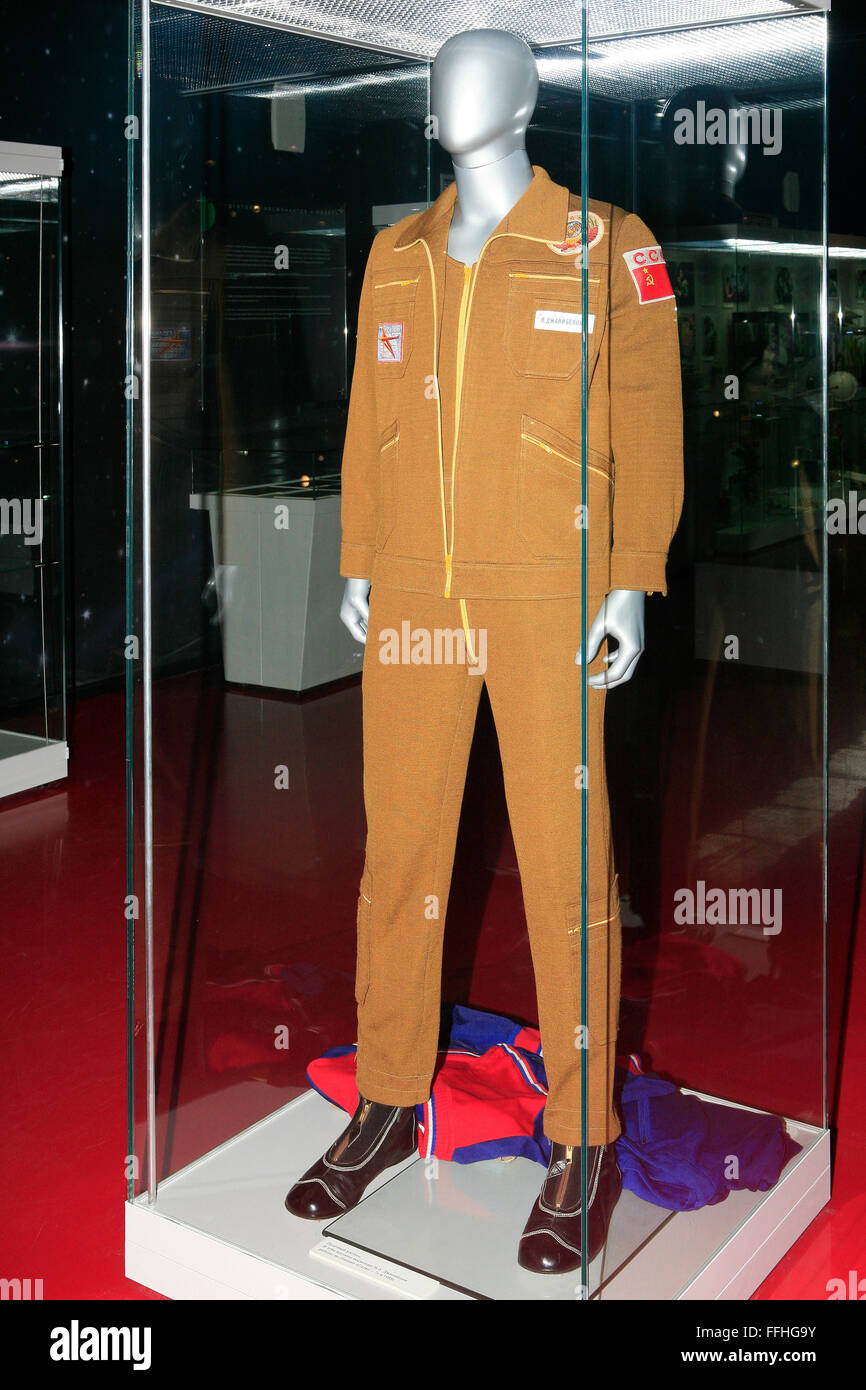Flight suit of Soviet cosmonaut Vladimir Dzhanibekov (1942) at the Memorial Museum of Astronautics in Moscow, Russia

Image details
Contributor:
DE ROCKER / Alamy Stock PhotoImage ID:
FFHG9YFile size:
36.4 MB (2.3 MB Compressed download)Releases:
Model - no | Property - noDo I need a release?Dimensions:
2912 x 4368 px | 24.7 x 37 cm | 9.7 x 14.6 inches | 300dpiDate taken:
13 May 2009Location:
Memorial Museum of Cosmonautics, Prospekt Mira 111, 129164 Moscow, Russia, Eastern EuropeMore information:
This photo : Flight suit of Soviet cosmonaut Vladimir Dzhanibekov with which he worked at the station Salyut-7 in 1985. Dzhanibekov was born Vladimir Aleksandrovich Krysin in the remote area of Iskandar (ru) in what was then Bostanliq District, South Kazakhstan Region, Kazakh SSR (since 1956 – Tashkent Region, Uzbekistan) on 13 May 1942. His family moved to Tashkent soon after his birth. In 1964 he married Liliya Munirovna Dzhanibekova, who was a descendant of Janibeg, medieval ruler of the Golden Horde. As her father had no sons, Dzhanibekov took his wife's family name in order to honor her ancestry and continue her line of descent, an unusual step for a husband in the Soviet Union. In 1960 he entered Leningrad University to study physics, where he became involved in flying, something in which he had always been interested. In 1961 he decided to enroll in the V. M. Komarov Higher Military Flying School at Yeisk and simultaneously studied at the Taganrog State University of Radioengineering. Four years later he graduated and became a flying instructor in the Soviet Air force serving at military training unit number 99735 in Taganrog in 1968–1970. In 1970 during the visit of Gherman Titov to the Taganrog-based training unit, he was selected into the team of cosmonauts. This was the same year that he joined the Communist Party. Dzhanibekov made five flights: Soyuz 27, Soyuz 39, Soyuz T-6, Soyuz T-12 and Soyuz T-13. In all he had spent 145 days, 15 hours and 56 minutes in space over these five missions. He had also performed two EVAs with a total time of 8 hours and 35 minutes. In 1985 he demonstrated the tennis racket theorem, subsequently also called the Dzhanibekov effect, by showing that in free-fall rotation about an object's second principal axis is unstable.